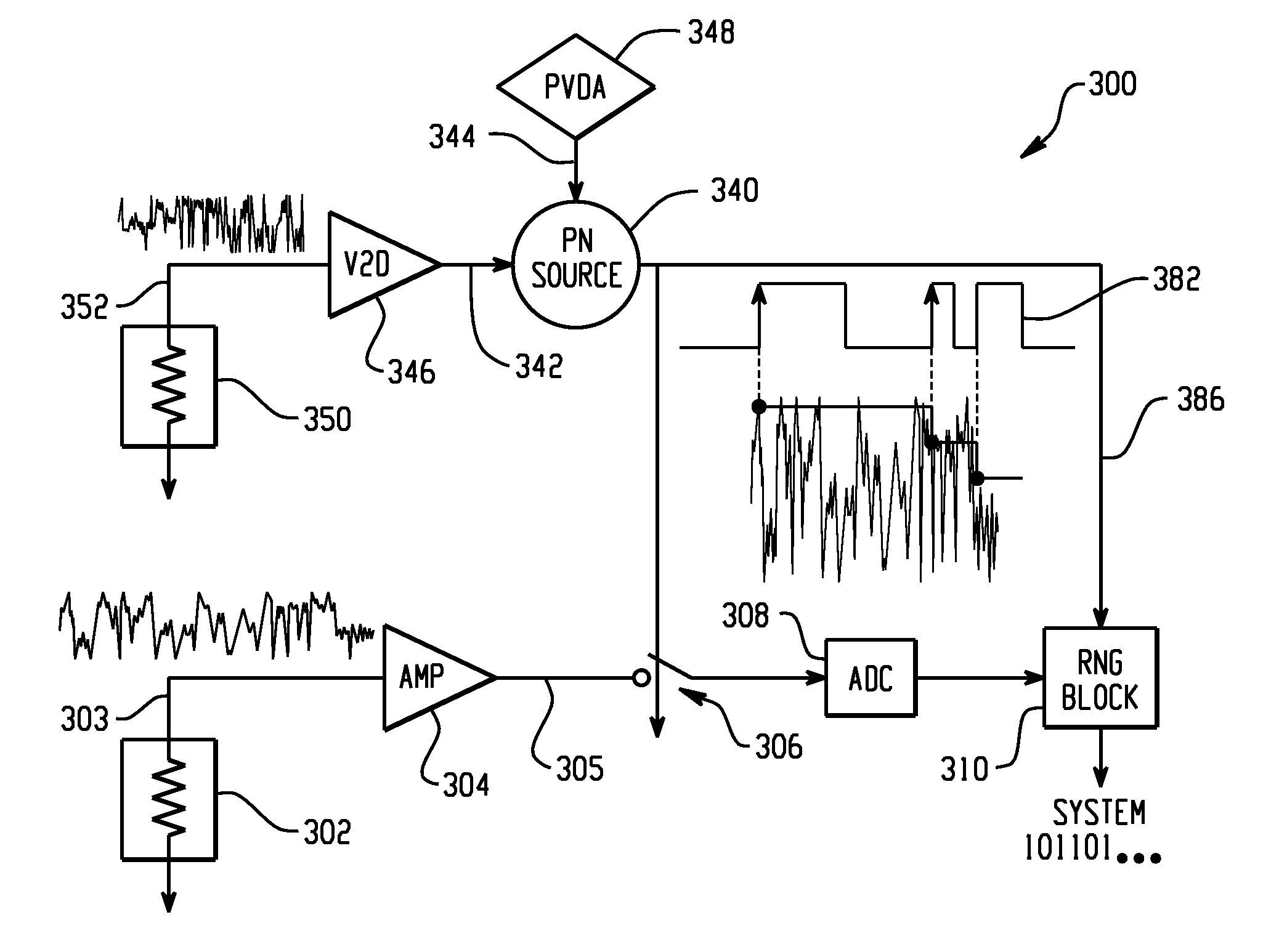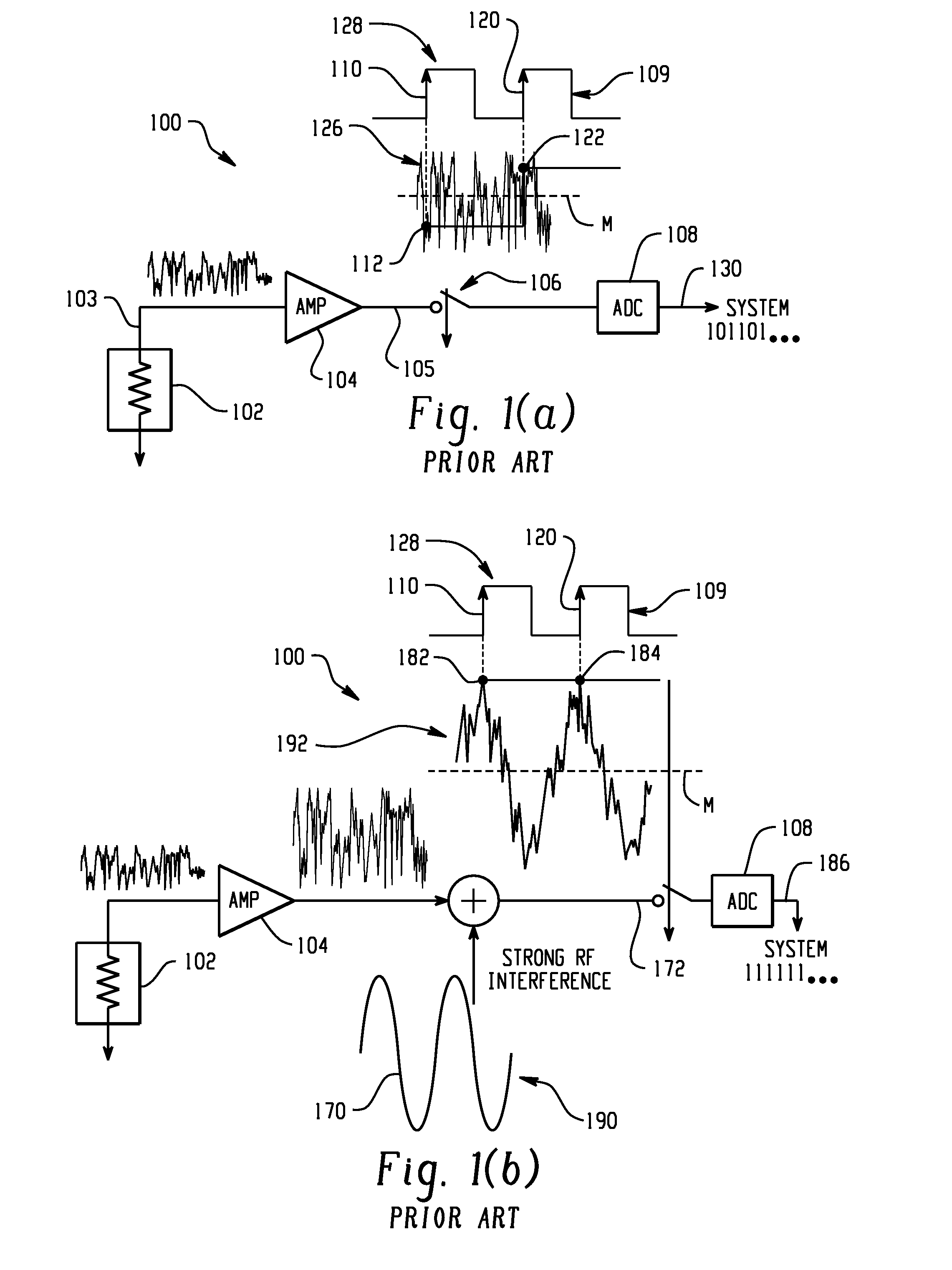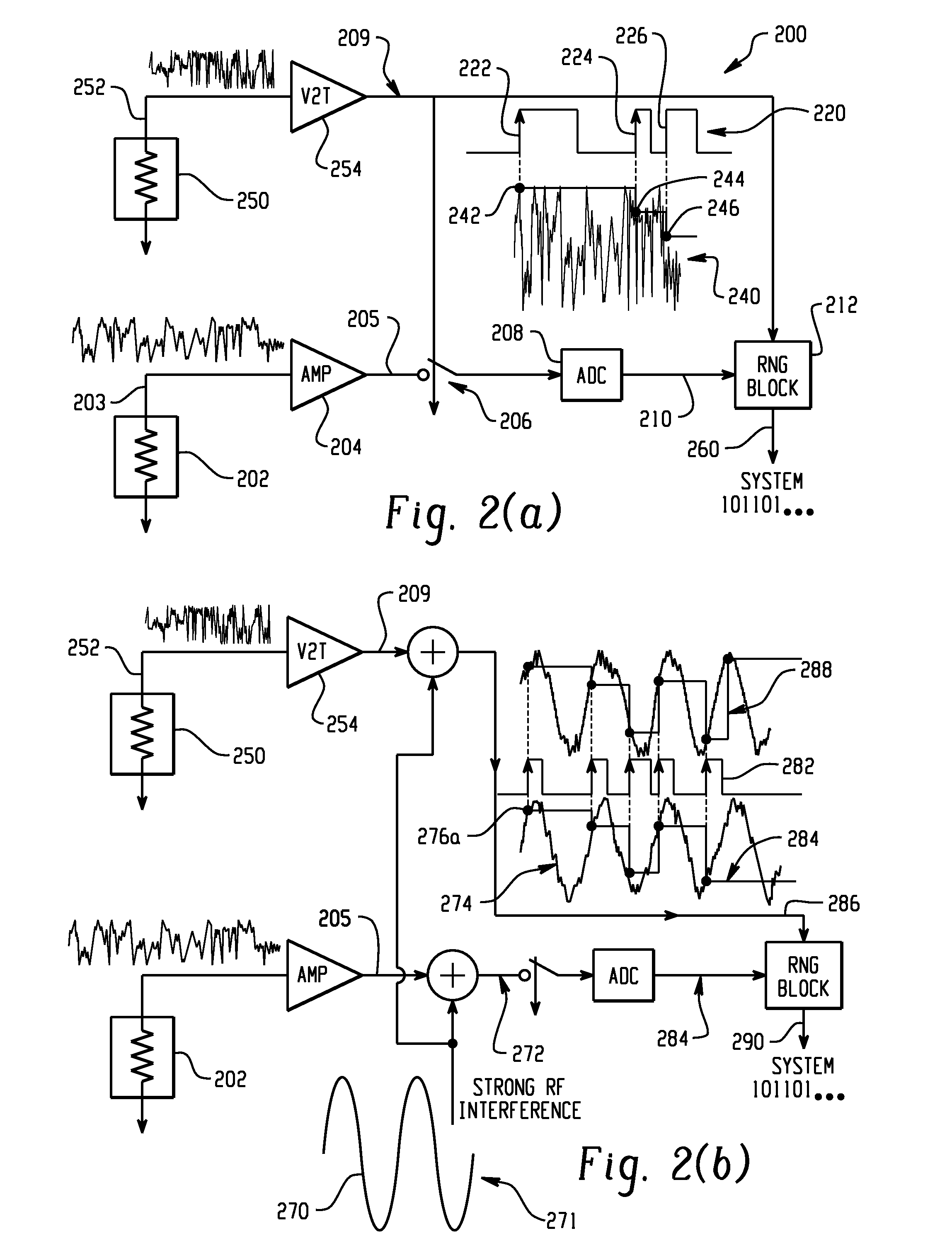Random number generator with random sampling
a random number generator and random sampling technology, applied in the field of random number generation, can solve the problems of affecting defeating cryptography security, and unwanted signals such as crosstalk and power supply noise, and achieving the effect of reducing the actual randomness of the sequence of numbers generated
- Summary
- Abstract
- Description
- Claims
- Application Information
AI Technical Summary
Benefits of technology
Problems solved by technology
Method used
Image
Examples
Embodiment Construction
[0026]Still further aspects of the present invention will be appreciated by those of ordinary skill in the art upon reading and understanding the following detailed description. For convenience purposes, the Detailed Description of the Invention has the following sections:
[0027]I. General Description
[0028]II. Computerized Implementation.
I. General Description
[0029]FIGS. 2(a) and 2(b) are schematic illustrations of an RNG structure 200 according to the present invention. A first analog noise source 202 produces a first random noise signal 203. In one example, the first analog noise source 202 is a hardware noise source 202 that generates the first noise signal 203 from physical process phenomena (such as thermal noise, photoelectric effect or other quantum phenomena). An amplifier 204 amplifies the first noise signal 203 into an amplified first noise signal 205 for sampling through switch 206 and conversion into discrete digital numbers by an analog-to-digital converter (ADC) 208. Ho...
PUM
 Login to View More
Login to View More Abstract
Description
Claims
Application Information
 Login to View More
Login to View More - R&D
- Intellectual Property
- Life Sciences
- Materials
- Tech Scout
- Unparalleled Data Quality
- Higher Quality Content
- 60% Fewer Hallucinations
Browse by: Latest US Patents, China's latest patents, Technical Efficacy Thesaurus, Application Domain, Technology Topic, Popular Technical Reports.
© 2025 PatSnap. All rights reserved.Legal|Privacy policy|Modern Slavery Act Transparency Statement|Sitemap|About US| Contact US: help@patsnap.com



